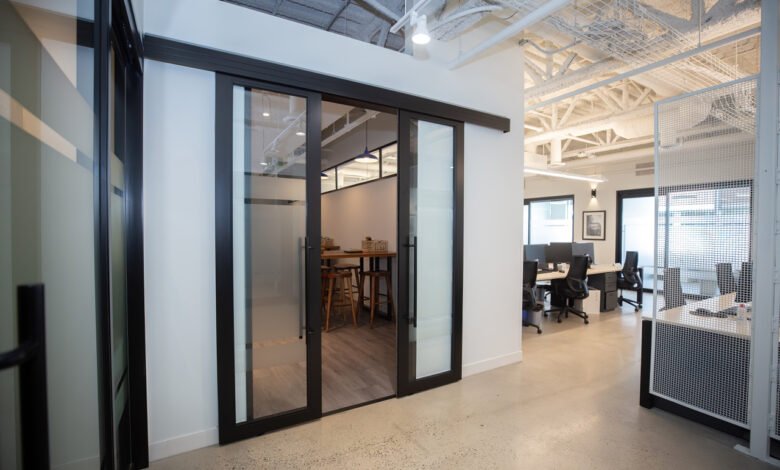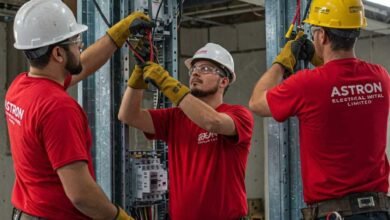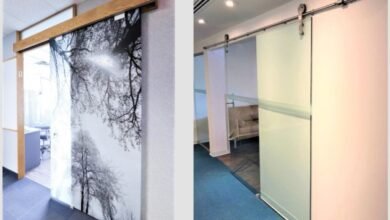How PC350 Sliding Door Systems Contribute to LEED and Sustainability Goals

For commercial projects, sustainability is a core requirement, not an afterthought. Architects, designers, and project managers have begun designing eco-friendly and energy-efficient buildings that meet green standards accepted worldwide. An example of such standards is LEED (Leadership in Energy and Environmental Design), which is accepted worldwide as a standard in sustainable building practice.
Some minor touches in designing any building for LEED certification or greener office buildings will have a great impact. The selection of PC350 sliding doors has such an impact.
7 Ways in Which PC350 Sliding Door Systems Support LEED Certification and Advance Sustainability in Modern Interiors
Now, let us look into how sliding doors help architects and developers achieve LEED and sustainability checkpoints in their projects and how quickly they are becoming highly sought-after components in the latest commercial interior sliding door design.
1. Maximize Natural Light for Energy Efficiency
Green building principles promote reducing reliance on artificial lighting. More daylight means less energy consumption.
2. Optimize Interior Space and Thermal Comfort
More efficient use of floor space indeed allows for better planning of interiors and zoning of energy. For instance, from the point of view of HVAC system design, smaller areas enclosed by PC350 sliding door partitions require less energy to heat or cool. Along with good insulation and glass options, the doors help keep the internal temperature steady and reduce the air-conditioning load. This also assists the LEED Energy & Atmosphere (EA) credit for optimized energy performance.
3. Environmentally Responsible Materials and Manufacturing
PC350 door solutions are designed with sustainability in mind. Many components of their sliding door systems are made from recyclable materials like aluminum and tempered glass, both of which are highly sustainable when sourced responsibly.
In choosing materials that qualify as Materials and Resources (MR) credit category of LEED, businesses help in waste reduction and mitigation of environmental impact.
Moreover, the manufacturing and installation processes follow low-waste production philosophies to keep on-site waste to a minimum and ensure higher sustainability during the entire lifecycle of the project.
4. Durable Reduction and Replacement of Waste
Being sustainable is not just about what materials something is made of, but also about how long the thing lasts. PC350 sliding door systems are intended for long-term use in commercial buildings. The mechanisms were made to withstand thousands of openings and closings, so they hardly get worn out.
Because of long service life, these doors require fewer replacements over the years, limiting resource-demanding renovations and contributing toward waste reduction key measure of the LEED lifecycle approach to building materials.
Moreover, the fact that these sliding door systems demand very low maintenance, with parts that do not corrode or degrade, means there is no heavy-duty cleaning with toxic chemicals or frequent heavy-duty repairs for environmental friendliness.
5. Improved Indoor Environmental Quality (IEQ)
The LEED system has great emphasis on occupant comfort and well-being, which falls under the Indoor Environmental Credit.
- Visual Connectivity without Disruptions: Frosted or semi-transparent sliding furnishes privacy and, at the same time, permits the passage of natural light and visual connectivity, greatly uplifting the user experience.
- Low-Emitting Materials: PC350 harnesses materials and finishes having low VOC emissions, making sure that there is good indoor air quality.
These, integrated, would help satisfy a number of LEED prerequisites for indoor air quality and user comfort.
6. Supporting Green Certifications and Credits
During construction or renovation, every detail is crucial when going for LEED certification.
- It can contribute to Eco-friendly strategies for Energy & Atmosphere (EA) wherein natural lighting and thermal performances, along with reductions in HVAC loads, are involved.
- Materials & Resources (MR) will be all about recycled, durable, and responsibly sourced materials.
- Indoor Environmental Quality (IEQ) will concern light transmission, acoustics, low-VOC materials, and daylight access.
- Innovation in Design (ID) will be directed toward modular systems and innovative space planning options.
Thus, PC350 can further contribute to lead credits by way of documentation and product support to architects and sustainability consultants in order to expedite and clarify the process.
7. Boosting Employee Wellness and Productivity
Well-being is four-dimensional with sustainability. Daylight, air, and flexible layouts in workspaces increase employee morale, decrease stress, and increase willingness to perform. An instance can be PC350 sliding doors: the open glass format permits side-by-side movements.
In this way, the systems help assure healthy work environments and coordinate well with the WELL Building Standard version, which usually has overlapping objectives with LEED. Thus, sliding doors find their place at the intersection of green construction and an employee-enticing environment.
Conclusion
The PC350 commercial interior sliding door is not just about aesthetics. They actually assist in the attainment of LEED certification and further sustainability goals. They respect the environment and the end-users, along with natural light and thermal comfort considerations, recyclable materials, and modular layouts.
The time has passed for simply choosing architectural elements. Green buildings are here. So are PC350 door systems with sliding doors that not only perform but also meet the highest green building standards.
If you are designing a LEED-certified project or simply wish to go green with your structures, then PC350 sliding doors for commercial interiors are a sustainable solution.




